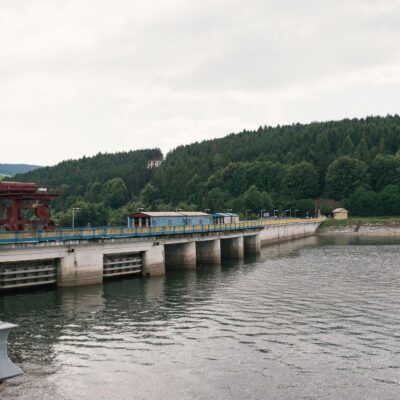Reviewing a client’s “strategy” document recently confused me. In the introduction, it noted that the strategy document defined the desired state for the business unit in 3 years’ time. I was just starting work with the unit and this document was to help orient me to the task at hand – helping to figure out the best way to do quarterly planning to achieve the strategy. The trouble was, when I finished reading it, I had no idea what it was the business unit was setting out to do.
Defining the desired state seems to be a growing fad in strategic planning. But it’s not enough.

What is a desired state?
Essentially, defining the desired state is about clearly describing what the organization (or business unit) will look like at the end of the chosen time period. What are they doing? Who are the customers they work with? How does the business unit support the company’s overall strategic goals? And, how does it feel to be a person working in the business unit? The desired state is usually written in the present tense, as though it is already the lived reality.
It is important for leaders to be clear about the desired state that the organization is working towards. And it is important that all employees know this desired state and are in alignment with working towards achieving this state together.
It is essential that strategic planning doesn’t stop there though. There are 2 missing pieces to the puzzle that are necessary to support successfully achieving the desired state.
- a clear and honest understanding of the current state
- chosen strategies for how to move forward together from the current state into the desired state
The current state
When you set out on a trip, you need to know where you are starting from. The directions for how to get to the destination need both the start point and end point to be able to successfully navigate to where you want to go. If your starting point is across town or in another city, you’ll be lost before you even get started. The same is true for strategic planning.
A clear and honest understanding of the current state of the organization is as important as knowing your starting point on that road trip. What is the organization already doing well? Where is there room for improvement? Are the purpose and vision well understood? Is the organization in good health and balance? Is it ready to take on new activity that will achieve the desired state? Does it have the capacity and resources to do so?
Chosen strategies for getting to the desired state
When you set out on a trip and you know where you are starting from and where you are going, planning for how to get from Point A to Point B can begin.
Let’s say the distance is 1,200 km. You start by choosing whether to fly, take a train, or drive. If you’re driving, is it as quickly as possible on main highways? A little more scenic on secondary highways? Or a total adventure taking only smaller back roads? Will you drive straight through choosing milestones along the way to stop for a bite to eat and gas only? Will you break the drive into 2 days? Stop at tourism sites along the way? Is your vehicle recently serviced and ready for the trip? Drivers license, health insurance, and passport up to date? Each of these choices (in other words, each strategy chosen) informs the kind of experiences that will be had along the way. And the milestones that mark the progress of the journey.
It is equally important to choose strategies for how an organization will get from its current state to its desired state. Just like the strategies for the road trip, organizational strategies define how the organization will get from Point A to Point B. The strategies need to include not just what the organization will accomplish, but also the resources, skills, and capacities needed to get the work done. And identify milestones to measure progress along the way.
Current State + Strategies + Desired State = Success
With these 3 key ingredients in hand, employees can understand where they are and where they are expected to go. The roadmap and its milestones are developed, communicated, and well-understood. This means employees know what is expected to achieve the desired state, rather than wasting time and energy guessing. Quarterly planning can include increasing capacity through training or hiring. It can also include resource allocation or development. And, just like the road trip, you can measure success on the journey when milestones are achieved.
Being Ready for Change
Working this way also makes an organization ready to adapt to change. Going back to the road trip analogy, if you’ve evaluated the options and chosen one path, it is much easier to choose another if you encounter construction, realize you need to make up some lost time, or decide to take a break and play tourist because driving right through is more exhausting than you thought it would be.
Organizations are the same. Choosing a strategy does not mean sticking with it no matter what. Rather, with clear strategies at hand, it is easier to identify new opportunities (or roadblocks) and adapt the strategy to the new conditions. Quickly and easily.
Photo by Jason Goodman on Unsplash









Elisabeth
Dear Rachel,
I love this article and I’ll quote you!
It’s exactly the work of coaching. There’s no way we can move to B without knowing what A is all about.
I love the trip metaphor!
Thank you!